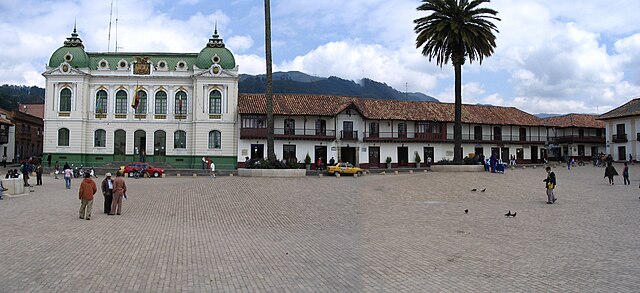Salt Cathedral of Zipaquirá
The Salt Cathedral of Zipaquirá is an underground Roman Catholic church built within the tunnels of a salt mine 200 metres (660 ft) underground in a halite mountain near the city of Zipaquirá, in Cundinamarca, Colombia. It is a tourist destination and place of pilgrimage in the country. The temple at the bottom has three sections, representing the birth, life, and death of Jesus. The icons, ornaments and architectural details are hand carved in the halite rock. Some marble sculptures are included. The cathedral is considered one of the most notable achievements of Colombian architecture, being described as a "Jewel of Modern Architecture". The cathedral represents a valuable cultural, environmental and religious patrimony for the Colombian people.
La Creación del Hombre, sculpture by Carlos Enrique Rodríguez (Based in The Creation of Adam by Michelangelo), Central Barrel vault
Main altar of the old cathedral, with cross
Main altar in the new cathedral with cross and angel sculpture.
Holy Family sculpture.
Zipaquirá is a municipality and city of Colombia in the department of Cundinamarca. Its neighboring municipalities are Cogua and Nemocón to the north; Tocancipá to the east; Tabio, Cajicá and Sopó to the south; and Subachoque and Pacho to the west. Its seat of municipal government is 49 kilometers from the national capital Bogotá. It is part of the Greater Bogotá Metropolitan Area, and is the capital of the Sabana Centro province. It is also the headquarters of the diocese of the same name and that includes much of the Department of Cundinamarca, extending to the centre of Bogotá, the region of Rionegro, the Ubaté Valley, and the region of Guavio.
Central square of Zipaquirá
Main square of Zipaquirá
Typical street of Zipaquirá
Panorama of Zipaquirá








